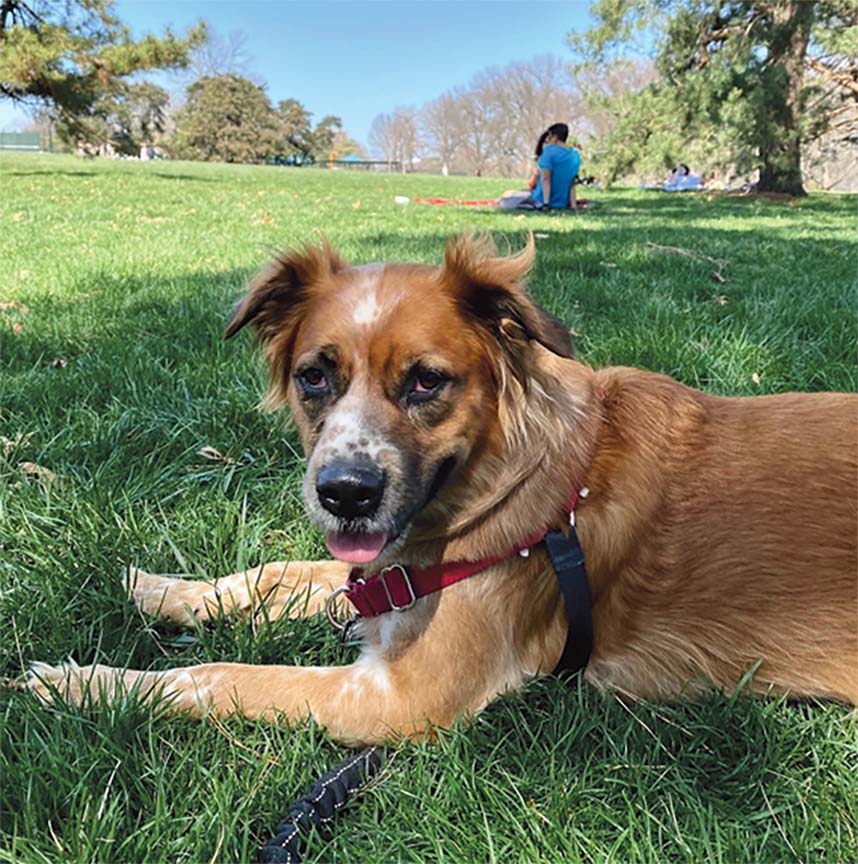
We adopted two shelter dogs during the pandemic. One is a beautiful (but jealous) Red-Heeler mix named Rosie. The other is a sweet, goofy Bulldog-Pit-Bull mix named Bean. We take them on walks around the neighborhood twice a day. The walks are good for us and good for them. It’s also good for the neighborhood to have people walking around, meeting neighbors, maintaining a visible presence, picking up litter, and keeping an eye on things.

Unfortunately, it’s not safe. In the last year, our dogs have been attacked four times by loose dogs. And that’s just the times they’ve actually been attacked. Almost every day, we see loose dogs in different parts of the neighborhood. Mostly they’re shy and don’t approach. Sometimes they’re curious or friendly. Sometimes they approach aggressively, but even then, we can usually scare them off or back out of a bad situation. Sometimes though, the loose dogs are too aroused to pay attention to the “barking” humans and they’ll bite or tackle one of our dogs.
Dogs Aren’t the Problem, Owners Are
Most of these dogs aren’t strays. They have owners and homes. The most recent and most dangerous attack against one of our dogs happened because another dog owner had two dogs out in public with no leashes.
This last attack was bad. I thought Bean was going to be killed or at least seriously injured. Adrenaline flooded my body. It took three men to pull the other dog off Bean’s throat. Fortunately, Bean emerged mostly unhurt and with his throat and his goofy, happy disposition intact. He recovered from it faster than I did.
For whatever reasons, some owners aren’t able or don’t care enough to keep their dogs safely at home. This makes our neighborhood a dangerous place to walk. And that’s not OK. We need to change the culture of dog ownership in NEKC.
The American Veterinary Association has published Guidelines for Responsible Pet Ownership. Here are a few selections from that list.
Ensuring pets are properly identified (i.e., tags, microchips, or tattoos) and that their registration information in associated databases is kept up-to-date
Adhering to local ordinances, including licensing and leash requirements.
Helping to manage overpopulation by controlling your pet(s)’ reproduction through managed breeding, containment, or spay/neuter. Establishing and maintaining a veterinarian-client-patient relationship.
Socialization and appropriate training for your pet(s) to facilitate their well-being and the well-being of other animals and people.
Preventing your pet(s) from negatively impacting other people, animals and the environment. This includes proper waste disposal, noise control, and not allowing pet(s) to stray or become feral.
Our neighborhood and the entire NEKC region would be a much safer and better place if more dog owners followed these guidelines.
Animal Control Doesn’t Help
It’s a widely held view in NEKC that KC Animal Control (KC Pet Project) does nothing to address the issue of loose dogs here. Every time I’ve reported a dog, animal control has responded in days, not hours let alone minutes. They have no presence in NEKC, and no proactive programs to encourage responsible dog ownership here. Both the city and KC Pet Project are at fault for failing to provide even the most basic services to our region. But the real problem is still, the owners themselves.
Arming Up
My partner and I now carry pepper spray, and I carry a dog bite stick. It looks like a heavy plastic dagger with a 9-inch “blade” (it’s not sharp). It’s designed to pry a dog’s mouth open in the event of an attack. I feel like a dork walking around the neighborhood with a plastic sword, but that’s where we are. Another dog owner in the neighborhood says he always wears steel-toed boots when he walks his dog, in case he needs to kick an aggressive dog in the head. I contemplated buying a shock stick, but I figured that the one time I needed it, it probably wouldn’t be charged up. It shouldn’t be this way. We shouldn’t have to carry weapons. We should all be able to walk our dogs safely in our neighborhoods. Unfortunately, thanks to irresponsible dog owners, that’s not the case here.
A Culture of Responsibility
Ultimately, the solution is to change the culture of dog ownership in NEKC. Owning a dog should be a commitment. You’re committing to keeping your dog safe and well, and committing to keeping other people and other pets safe from your dog.
If your dog gets loose once, fix the problem. If your dog gets loose twice, you are the problem. If your dog gets loose continually, you shouldn’t own a dog.
Dogs can be an asset to our neighborhoods. They can not only guard our homes, but they can increase the wellbeing and safety of the neighborhood as a whole. Unfortunately, as long as we tolerate irresponsible dog owners, our neighborhoods will not be safe for people and dogs to walk in. We have to pay attention to this problem and fix it.
Mark Logan
Aug. 5, 2022
Editor’s Note: We apologize but the names of the dogs didn’t make it into the print edition of the letter. Our readers were made to guess the names of the dogs we included in the photographs.

















